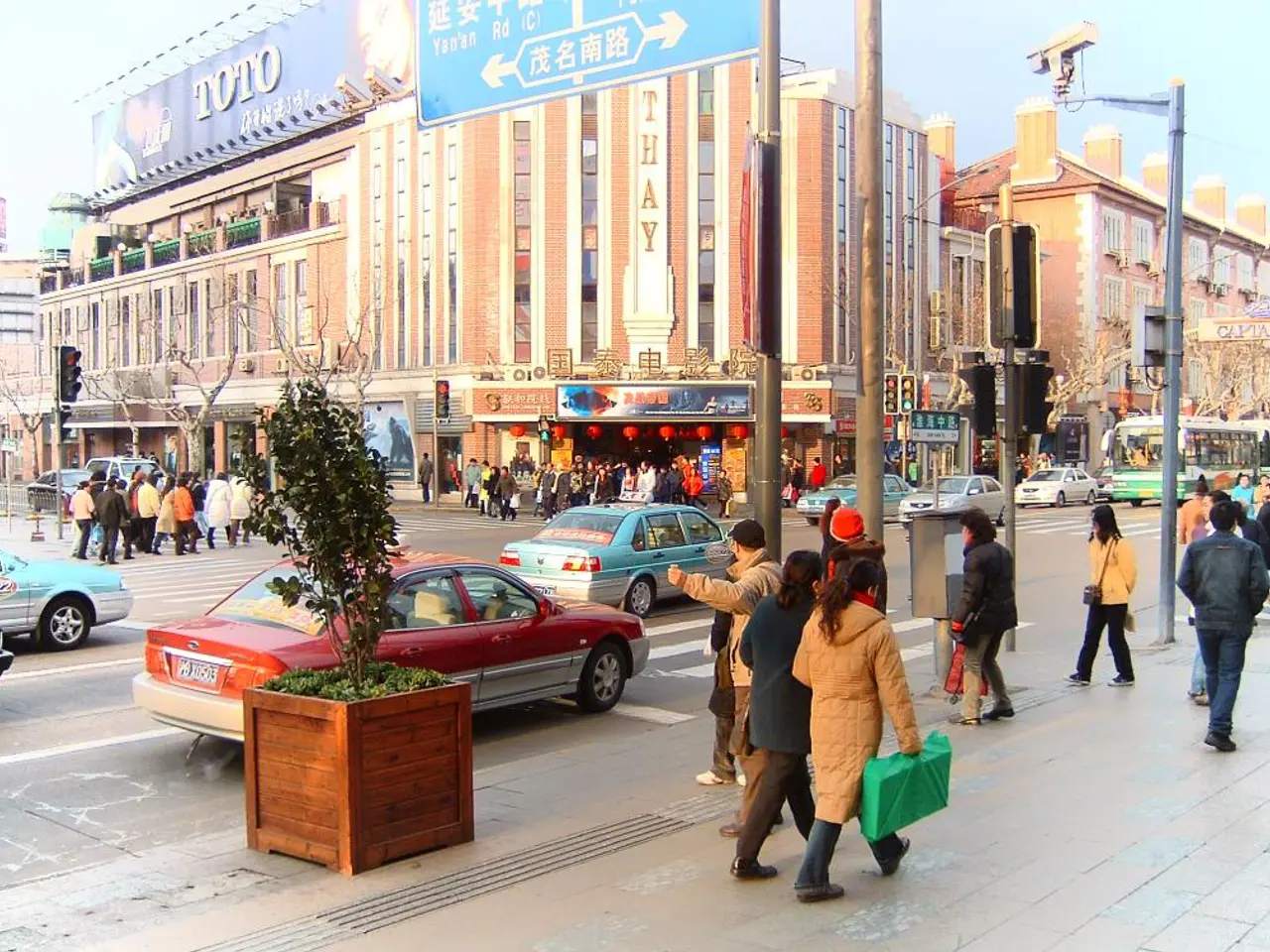Researchers uncover accelerated walking pace and decreased lingering duration among pedestrians
In a groundbreaking study, researchers have shed light on the dramatic changes that have occurred in public spaces in cities like New York, Boston, and Philadelphia over the past four decades. The study, published in the Proceedings of the National Academy of Sciences, was co-authored by scholars from MIT, Yale University, the University of Hong Kong, Michigan State University, and Harvard University.
The research, led by Assistant Professor Arianna Salazar-Miranda of Yale University's School of the Environment, reveals a significant decrease in group interactions and lingering in public spaces. The percentage of individuals who met up with a group in public spaces dropped from 5.5% in 1980 to 2% in 2010. This shift is primarily attributed to a transformation in how urban residents perceive and use city streets.
One key factor contributing to this change is the proliferation of indoor social venues, particularly coffee shops. In 1980, coffeeshops were far less common, and large chain coffeeshops did not exist. Today, these comfortable indoor venues pull people away from lingering outdoors, encouraging a more purposeful, time-efficient use of urban space.
Another significant factor is the impact of technology. The digital orchestration of daily life, including communication and socialization via technology, contributes to a reduction in physical interactions and lingering in public areas. While technology connects people remotely, it also reinforces the fast-paced, transient nature of pedestrian behavior.
The study used machine-learning tools to analyze 1980s-era video footage captured by urbanist William Whyte in these cities. In the latter part of his career, Whyte focused on urbanism, and his footage from 1978 through 1980 was archived by the Project for Public Spaces and later digitized by Keith N. Hampton and his students.
The researchers have turned their attention to collecting footage from 40 squares in Europe to learn at a larger scale. In 2010, new footage was shot at the same locations as in the 1980s to compare current-day dynamics with those of the past. The researchers are conducting an extensive survey of European public spaces to shed more light on the interaction between people and public spaces.
Public space is considered an important element of civic life, according to Salazar-Miranda. It counteracts the polarization of digital space and helps in convening people. The study suggests that public spaces are working in different ways today, functioning more as thoroughfares and less as spaces of encounter. The findings could help inform urban planning, aiding in the creation or modification of public areas to better serve their intended purpose.
The study also highlights the decline in group encounters and social interactions outdoors, with urban streets increasingly viewed as corridors connecting points rather than places for social encounters. The decrease in group interactions in public spaces could be due to the pervasive use of cellphones and the availability of indoor venues like coffee shops.
Despite these changes, the study shows that the percentage of people walking alone slightly increased from 67% in 1980 to 68% in 2010. However, the average walking speed of pedestrians in these cities increased 15 percent from 1980 to 2010, according to the study. The number of people lingering in public spaces declined by 14 percent in that time.
The study serves as a reminder of the evolving nature of public spaces and the importance of understanding these changes to create urban environments that foster social interaction and civic engagement.
[1] Salazar-Miranda, A., et al. (2022). The decline of lingering and the rise of movement in urban public spaces. Proceedings of the National Academy of Sciences. [2] Hampton, K. N., et al. (2010). The decline of lingering in public spaces. Environment and Behavior, 42(6), 667-688. [3] Salazar-Miranda, A., et al. (2018). The rise of indoor social venues and its impact on public spaces. Urban Studies, 55(10), 2113-2131.
- The study led by Assistant Professor Arianna Salazar-Miranda reveals a significant decrease in group interactions and lingering in public spaces over the past four decades.
- The shift in public space usage is primarily attributed to a transformation in how urban residents perceive and use city streets, influenced by factors such as the proliferation of indoor social venues and technology.
- One key factor is the rise of coffee shops, comfortable indoor venues that pull people away from lingering outdoors, encouraging a more purposeful, time-efficient use of urban space.
- Technology, with its digital orchestration of daily life, also contributes to a reduction in physical interactions and lingering in public areas, reinforcing the fast-paced, transient nature of pedestrian behavior.
- Researchers used machine-learning tools to analyze 1980s-era video footage captured by urbanist William Whyte and will collect more data from European public spaces to gain a larger understanding of the interaction between people and public spaces.
- Public spaces play a crucial role in civic life, according to Salazar-Miranda, counteracting the polarization of digital space and helping in convening people.
- The study suggests that public spaces are working in different ways today, functioning more as thoroughfares and less as spaces of encounter, but a slight increase in people walking alone was observed.
- The study serves as a reminder of the evolving nature of public spaces, emphasizing the importance of understanding these changes to create urban environments that foster social interaction and civic engagement.




